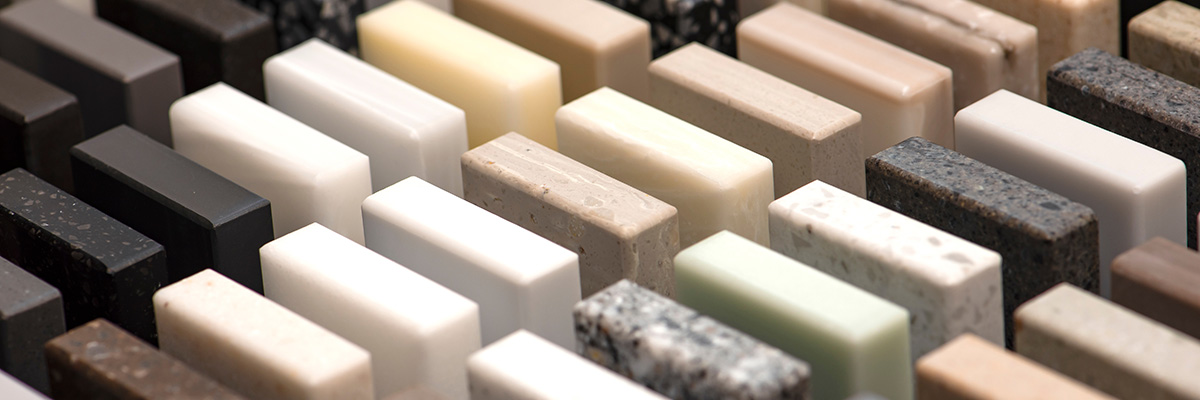Surface Disinfection Compatibility Part 2: Selecting Surface Materials

As we explained in Part 1 of this series, Surface Disinfection Compatibility Part 1: What Is It?, infection prevention teams, healthcare facilities designers, and manufacturers of products used for patient care and within the healthcare setting materials do not have the guidance and information they need to address surface disinfection compatibility issues adequately. A lack of communication between key groups can result in the issue being overlooked entirely. Awareness of the surface selection problem itself – among all parties – is crucial.
Here are steps you can take right now to include surface disinfection compatibility in your choices of surface materials and products to use in the healthcare environment.
Step 1: Communication!
It is critical to establish a single point of contact within the healthcare facility, such as a value analysis professional, when purchasing products for the healthcare facility that require cleaning and disinfection. This person should:
- Ensure all key decision-makers carefully evaluate the Instructions for Use (IFU) and cleaning and disinfection guidelines from the manufacturer to determine compatibility with the infection control guidelines at the healthcare facility.
- Facilitate conversations with the manufacturers. Since each professional will look at different aspects of the product during the evaluation process, having a single point of contact can help prevent this critical question from being overlooked: Can this product be effectively cleaned and disinfected without being damaged?
This process will help all parties understand the real-life challenges healthcare, IPs, and EVS professionals face when working to mitigate the spread of infections within the healthcare setting.
Step 2: Create guidelines for material selection during design
Build awareness of surface disinfection compatibility issues during selecting surface materials and products during the design phase of a healthcare facility and create guidelines for material selection. Suppose a raw material cannot be effectively cleaned and disinfected without damage. In that case, this fact must be established before being used in the built environment or for the design of a product for patient care.
- Carefully review instructions for use (IFUs) and cleaning and disinfection guidelines for all products being evaluated to purchase for the facility.
- The built environment consists of many surface materials and products – walls, floor, ceiling, casework, and the list goes on. Review these spaces as an assembly and evaluate the ability to clean and disinfect them using the same disinfectants.
Medical devices used for patient care have many different types of materials assembled on one device. The same is true for furnishings. Consider that many of these devices will be cleaned by several people, including clinical staff and environmental services. Typically, someone will reach for a wipe and wipe all components. Are all materials compatible with that type of wipe? Frequently the answer is no, and damage occurs, resulting in the creation of microbial reservoirs that can harbor and spread dangerous pathogens.

Step 3: Check before you purchase
Create checklists for product review. To do this effectively, remember that each key decision-maker will evaluate products or the built environment differently. For example, Environmental Services (EVS) will want to know what disinfectants can be used. Value Analysis professionals will want to see the life cycle and cost of ownership, and directors of nursing may wish to know about patient safety or ease of use.
- Ensure the product review checklists include the required objectives of each key decision-maker.
- Build review of surface disinfection compatibility issues in these checklists: Can a surface (or the surfaces used on a product) be safely cleaned and disinfected following the infection prevention guidelines established by the healthcare facility?
- Review the IFU. Compare recommendations with IP guidelines for cleaning and disinfection to ensure they are compatible. Ask for manufacturer warnings and testing data to validate claims.
- Warning: never give a manufacturer a list of disinfectants you use so they can put them on company letterhead as approved products. They must be tested and validated, and you need to have documentation that they have been tested.

Step 4: Support the creation and use of standards and guidelines for surface disinfection compatibility compliance
Currently, there are no regulatory testing requirements for evaluating surface disinfection compatibility, nor are there guidelines to support manufacturers as they look for ways to test their products. There are hundreds of disinfectant companies and proprietary chemistries. It would be cost-prohibitive to test all these disinfectants. HSI is currently developing a surface material and products certification program which will offer consistent surface disinfection compatibility testing as a minimum standard for materials and products. This program will empower healthcare facilities and manufacturers to utilize science-based standard testing validation that surface materials or products can be effectively cleaned and disinfected following existing infection prevention protocols, processes, and products. This program will launch in 2022.
If you are interested in learning more about the program as we get closer to launch, please sign up for our email newsletter for updates.
Next, read Surface Disinfection Compatibility Part 3: Costs of “Incompatibility” in Healthcare, where we address the high costs of overlooking surface disinfection compatibility in the healthcare environment.
Part 1 is available here: Surface Disinfection Compatibility Part 1: What Is It?
As a 501(c)(3) non-profit organization, we rely on donations to save lives. We need your help.
Please consider donating, becoming a member, or exploring corporate sponsorship through your workplace today.

